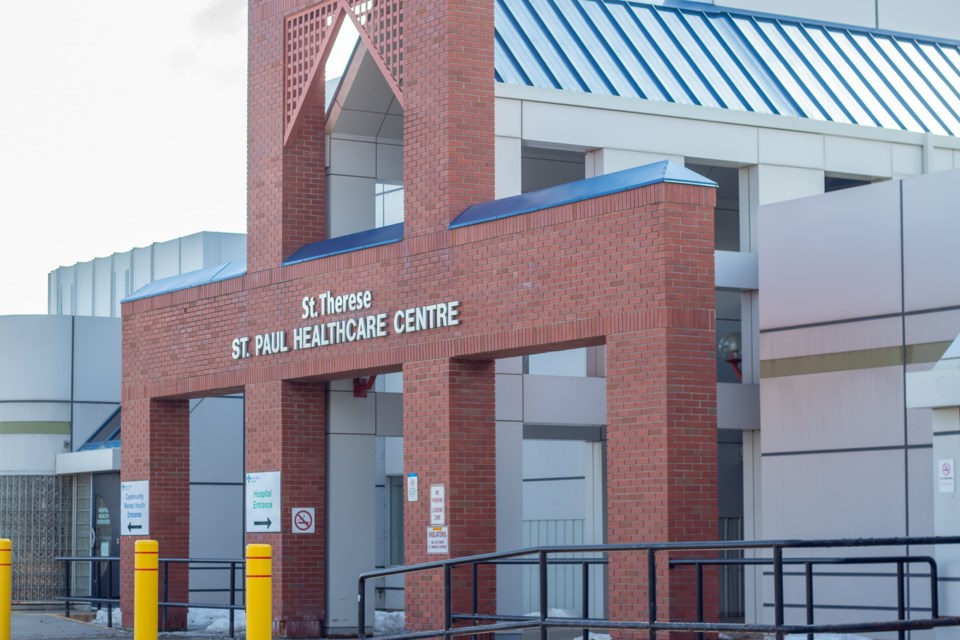ST. PAUL – Alberta Health Services (AHS) spent some time with County of St. Paul council discussing the continued effort to address nursing staff challenges in the North Zone, which includes much of the Lakeland and specifically the St. Paul region.
Jordanna Lambert, senior operating officer of the AHS for North Zone, spoke with council during a delegation on April 11. Lambert said AHS continues to aggressively recruit nurses in the region, which includes “bringing internationally educated nurses (IEN) to St. Paul.”
St. Paul will get six additional IENs “hopefully before year-end,” said Lambert, explaining that AHS has been working to minimize challenges that IENs face when coming to Alberta.
County of St. Paul CAO Sheila Kitz shared that the County of St. Paul, Town of St. Paul, Town of Elk Point, and Summer Village of Horseshoe Bay has been designated under the Rural Renewal Stream (RRS) program, which could help support international medical graduates.
“We want to make it a place they want to stay,” said Kitz.
“One thing that we've heard too, is around housing in rural areas, and how do we support those new recruits – internationally or not – in finding housing as well,” said Lambert. “So, that's an opportunity for partnership.”
Other efforts include AHS working in collaboration with Portage College and the University of Calgary, bringing nursing bridging programs to St. Paul, said Jamie Malone, site manager for the St. Therese - St. Paul Healthcare Centre.
Lambert affirmed the information, explaining there is a higher retention of nurses when they live in their own communities. “We know that if you live here, and you grew up here, you tend to want to stay here,” she said.
“[Malone] did great work in Wainwright,” where she helped develop a rural nursing program, “and we’re hoping to bring that into this space as well,” said Lambert.
Coun. Darryl Younghans asked if the shortage of nurses in rural Alberta is due to the rural setting, or if it’s because “we’re not training enough nurses” in the region.
“I think it’s a mix to be very honest,” said Lambert, explaining that it takes “a special, different nurse to be able to practice in a rural setting.” It is also tougher to staff rural areas due to “generational shifts" where younger people are moving to the cities.
Coun. Dale Hedrick asked about the feasibility of working with the local school division to encourage students to study healthcare-related professions.
Malone reiterated Lambert’s statement, in that the AHS believes in the philosophy of “growing your own,” to address recruitment and retention. She hopes to talk to the school division about activities such as “health skills days” being offered to local high school students, for example.
In addition, she also hopes to work with school counsellors regarding the possibility of doing job shadowing for students interested in healthcare, exposing them to a variety of career options.
The rest of the AHS delegation expressed their agreement, including Zone Medical Director for the North Zone, Dr. Albert Harmse.
Harmse agreed that the idea of collaborating with schools is “very” good. “There’s a lot of careers in the medical world that people are just not aware of... We can make people aware of that.”
Service disruption and patient flow
Another point of discussion during the delegation included service disruptions and patient flow, and what AHS is doing to address the issues.
According to Lambert, AHS has been doing a lot of work to improve booking, access, and clinical tools to make decisions on patient priority. “One of the goals here is really on how to keep our patients moving through the health system as safe and fast as possible.”
Lambert said temporary service disruptions are a last resort after all options have been exhausted.
“We make every effort to ensure staff and physician coverage before we make an announcement,” she said, explaining causes may include staff vacancies or upgrades in different infrastructure. “Sometimes it’s very last minute because we just can’t find the staff.”
The communication process when releasing the announcements is also being readjusted, according to Lambert, to try to “get that message out as much as we can.”
As for the St. Therese-St. Paul Healthcare Centre, Lambert said that an upgrade in the emergency department (ED) is coming soon. The upgrade will be a “year-long renovation that we’re really looking forward to,” which will improve patient flow within the ED.
The upgrades will include three new spaces for patient rooms and a new triage space.
RELATED: $3.5 million upgrade to St. Paul Health Centre announced



